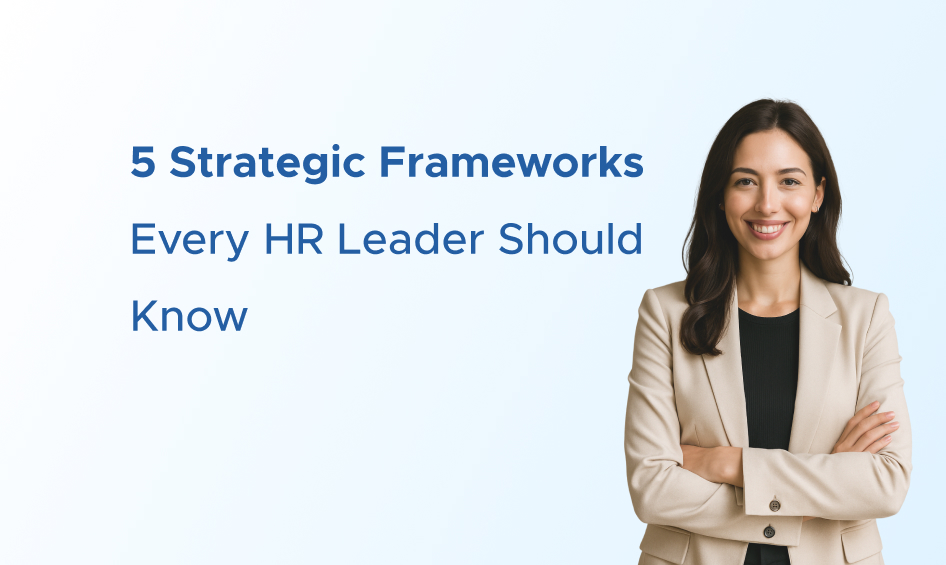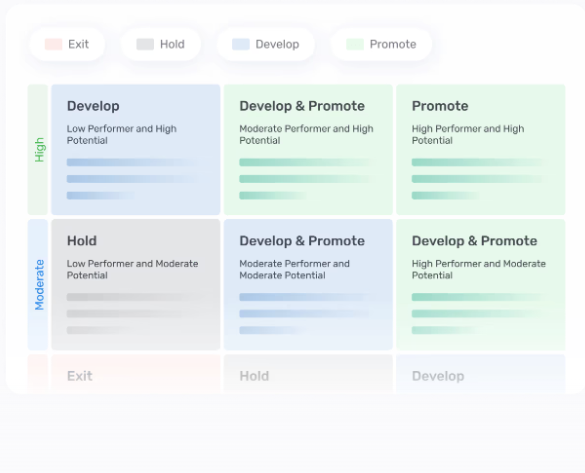5 Strategic Frameworks Every HR Leader Should Know
In today’s evolving workplace, HR leaders need more than good judgment—they need strategic structure. This article dives into 5 essential HR frameworks that help teams hire smarter, develop talent, and align people strategies with business outcomes.

In today’s complex workplace, HR leaders can’t rely on instinct alone. As organizations deal with talent shortages, hybrid work models, and evolving employee expectations, structure becomes essential. Frameworks offer that structure.
Whether you're building your HR function from the ground up or optimizing an enterprise-level people strategy, these five frameworks can help you move from guesswork to clarity, from firefighting to foresight.
This article covers five strategic HR frameworks every leader should know with definitions, applications, and embedded tools to explore.
1. Competency-Based Interviews (CBI)
What it is:
CBI is a structured interviewing technique that evaluates candidates based on predefined competencies aligned with job success. Instead of asking hypothetical or generic questions, CBI focuses on how candidates behaved in real-world scenarios.
Why it works:
- Reduces bias by standardizing questions.
- Aligns hiring decisions with core job competencies.
- Improves quality of hires, especially for leadership or specialized roles.
How it's used:
Organizations typically define 5–8 core competencies for a role (e.g., problem-solving, teamwork, strategic thinking) and then ask behavioral questions like:
“Tell me about a time you resolved a conflict between departments.”
Pro Tip:
Integrating CBI with psychometric testing or structured scorecards elevates both objectivity and predictability in your hiring process.
2. 9-Box Grid
What it is:
The 9-Box Grid is a talent management tool that helps HR leaders plot employees based on performance and potential. The result is a 3x3 matrix that visualizes where your talent stands today and where they could go next.
Why it works:
- Enables data-backed succession planning.
- Identifies high performers ready for promotion.
- Highlights underperformers who need development or realignment.

How it's used:
Managers and HR plot each employee into one of the nine boxes. For instance, someone in the top-right quadrant (High Potential / High Performance) is a future leader. On the flip side, low potential and low performance might flag a mismatch or exit risk.
See it in action:
Explore how the 9-Box Grid is used within Zenithr, a platform designed to support strategic workforce planning.
3. Talent Lifecycle Framework
What it is:
This framework maps every stage of the employee journey, from pre-hire to exit. It’s not just about HR touchpoints — it’s about designing consistent experiences and policies that align with each phase.
Lifecycle Stages:
- Attract: Employer brand, sourcing, recruitment marketing
- Hire: Interviews, assessments, offers
- Onboard: Orientation, culture, ramp-up
- Develop: Learning, coaching, mobility
- Engage: Surveys, well-being, rewards
- Exit: Offboarding, alumni networks
Why it works:
- Improves consistency across functions.
- Helps HR leaders audit and enhance every phase of the employee journey.
- Makes experience measurable.
Tip:
Zenithr’s Employee Experience tool allows you to measure and improve each of these stages with actionable insights.
4. People, Process, and Technology Framework
What it is:
Also known as the PPT Framework, this model helps HR leaders align three critical pillars:
Why it works:
- Encourages balance avoiding overinvestment in tech or overreliance on manual processes.
- Ensures that digital transformation includes people.
- Helps HR departments align structure and scale with operational goals.
Use case:
For HR functions implementing new tech (e.g., HRIS, AI-powered assessments), this framework ensures change management and adoption aren't afterthoughts.
5. The Advanced HR Value Chain
What it is:
A strategic framework created by Jon Ingham, the Advanced HR Value Chain connects HR activities to business outcomes. It emphasizes value creation at each stage of the talent lifecycle.
Key Stages:
Why it works:
- Helps HR prove its ROI through measurable business impact.
- Promotes integration across talent functions.
- Encourages long-term thinking.
Pro Tip:
This framework isespecially useful when tying HR KPIs to strategic goals (e.g., reducingattrition, increasing productivity).
Related Reading & Resources
- ➤ For more insight into HR maturity models and decision-making tools, explore our article:
5 Proven Management Frameworks for HR Professionals - ➤ To start designing your own frameworks or assess your current ones, our team at Procapita Group can guide you through every layer — from job descriptions and competency mapping to data benchmarking through Procapita Hub.
A Stack: How These Frameworks Connect
TOP — Strategy Execution: Advanced HR Value Chain
· Tactical Planning:3-Pillar (People, Process, Technology)
· Talent Development: 9-BoxGrid & Talent Lifecycle
BASE —Operational Consistency: CBI
Wrapping It All Together
HR frameworks aren’t just models they’re practical guides that help leaders focus, act, and grow with purpose. Whether you’re building talent pipelines, improving interviews, or aligning people strategy with business goals, these five frameworks give you a reliable starting point.
Want to see how your HR frameworks compare to regional best practices?
Explore powerful data insights and workforce trends on Procapita Hub, or contact our team at Procapita Group to start shaping frameworks.

